In the pursuit of inclusivity and accessibility, the importance of ensuring the safety and security of users in unisex accessible bathrooms cannot be overstated. Emergency call buttons, for instance, serve as a crucial lifeline in emergency situations, allowing users to quickly call for assistance in case of medical emergencies or other urgent needs.
While not a legal requirement, the inclusion of emergency call buttons in unisex accessible bathrooms aligns with the principles of accessibility and inclusivity, ensuring that individuals with disabilities have the necessary support in place to navigate sanitary facilities with confidence and dignity.
Emergency call buttons can be a valuable feature in accessible toilets, as they allow users to quickly summon assistance in case of an emergency, such as a medical issue or a maintenance problem. Installing an emergency call button can be particularly important for individuals with mobility impairments who may need help in certain situations.
While Australian legislation, specifically AS1428.1-2009, may not mandate the installation of emergency call buttons within these facilities, it is commendable to see efforts being made to improve accessibility and surpass minimum code requirements, on some projects. Furthermore, as of the latest update, there are no specific legislative requirements under the Disability Standards for Accessible Public Transport 2002 (Transport Standards), The Educational Facilities Standards and Guidelines (EFSG), or the National Safety and Quality Health Service Standards that mandate the installation of emergency call buttons within unisex accessible toilets in Australia.
However, the Department of Infrastructure, Transport, Regional Development, and Communications has issued guidelines focusing on emergency call buttons in accessible toilets, further emphasising the significance of these safety features.
While Australian Standard AS1428.1-2009 does not mandate emergency call buttons in unisex accessible bathrooms, recent efforts to exceed minimal code requirements in some projects highlight a growing recognition of the importance of enhancing safety and accessibility.
To optimize the effectiveness and accessibility of emergency call buttons, strategic placement is crucial. Ideally, they should be positioned within easy reach of someone using the WC pan and feature prominent signage for clear identification. Additionally, the installation of emergency call buttons at split levels, accommodating users in various positions, can further enhance the accessibility and reachability of these safety features. Consider the following guidance for the installation of emergency call buttons:
Proximity to WC Pan
Place the emergency call button adjacent to the WC pan, positioned between 900-1200mm above the finished floor and within reach of a person sitting on the pan to ensure accessibility for users.
Compliance Standards
Ensure buttons comply with AS1428.1-2009 clause 13.5.4, maintaining a clearance of 50-60mm from any obstructions.
Luminance Contrast
Provide a luminance contrast of at least 30% with the surrounding surface to enhance visibility. For buttons larger than 50mm in diameter, contrast may be achieved with the surface; for smaller buttons, consider a contrasting border around the button. Conduct luminance contrast testing in accordance with AS1428.1 Appendix B.
Braille and Tactile Signage
Incorporate braille and tactile signage to facilitate identification for users with visual impairments.
Split-Level Installation
Consider installing emergency call buttons at split levels to accommodate users in various positions. While current compliant heights may not be reachable for someone who has fallen, a second button positioned at 300-400mm above the finished floor and forward of the WC pan can provide an accessible solution for individuals in need of assistance, whether standing, sitting, or on the floor. This additional measure ensures comprehensive accessibility and safety in unisex accessible bathrooms.

While the specific requirements for emergency call buttons may vary across different standards and guidelines, the proactive approach to enhancing safety and accessibility in unisex accessible bathrooms through the installation of these features is commendable. By going beyond minimal code requirements and considering the diverse needs of users, we can create more inclusive and welcoming sanitary facilities for all individuals.
For personalised guidance or assistance in implementing safety features within accessible bathrooms, Vallabh Bailey Consulting remains steadfast in offering inventive solutions to elevate accessibility and prioritize user well-being in public facilities. Reach out to us for tailored recommendations and expert support in advancing safety and accessibility initiatives in your facilities.

Recent blogs
The Difference Between Universal Design and Accessibility in the Australian Context
In Australia, the concepts of universal design and accessibility play a crucial role in creating [...]
Read moreMay
Emergency Call Buttons – Enhancing Safety and Accessibility in Unisex Accessible Bathrooms
In the pursuit of inclusivity and accessibility, the importance of ensuring the safety and security [...]
Read moreMar
Crafting Inclusive Spaces: Our 5 Expert Tips on Universal Design Principals
Discover 5 expert tips from Vallabh Bailey Consulting on integrating universal design principals into architecture [...]
Read moreFeb
Keeping Accessibility Front of Mind in 2024: The Benefits of Designing for Disability Access in the Early Stages of the Design Process
Discover the benefits of designing for disability access in the early stages of the design [...]
Read moreJan
Keeping Accessibility Front of Mind in 2024: What is your one word for a better accessible 2024?
Learn why keeping accessibility front of mind in 2024 is crucial for creating inclusive environments [...]
Read moreJan
International Disability Awareness Day: Empowering Children with Disabilities to Enjoy Social Play
Delve into the importance of disability access and inclusion, with a specific focus on how [...]
Read moreDec